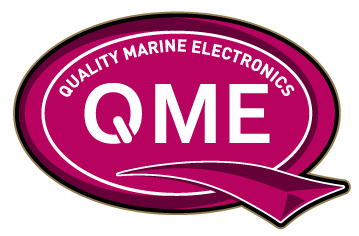Ever wondered if there was a reason why you could see Fish on your sounder screen and couldn’t buy a bite?
I have seen just about every mistake that can be made when it comes to incorrectly mounting a transducer, from sealing washers on the wrong side of the hull filling the hull with water to the transducer facing the wrong way giving you starboard-only side scan and nothing under your boat.
Footprint
Let’s just imagine the planets have aligned and your installation went by the book, do you know what the footprint of your Transducer is in 100M of water?
In 50M of water, a standard 6deg narrow beam places a 5M circular footprint under your boat, in 100m it shows a 10M circle, now this has been & was our main beam angle option for High freq out of the box transducers over the past 20 years. Airmar actually provides a bottom calculation tool.
Step up to the plate 25 deg Wide Beam, in 50M water depth wide beam gives you an impressive coverage of 22m in diameter, in 100m of water 44m is the footprint you get to see, now while this may not seem much to some, 44m is a long distance away from a rock holding fish, the lump on your screen could be 44m to port, starboard or ahead of you. Apart from the size of the vermin you catch how can you tell where the hell the rock is ?
How I do It.
Triangulation is commonly used in maritime navigation & is how i pin point a rock using a wide beam, mark the lump or show as it appears on the screen then turn a hard 90deg port and then turn 180 back on your track and mark the lump again as it appears on the screen. Do the same out to the opposite side of the original mark and you should have three separate marks, Drop a point in between THATS your ROCK!
While this may seem a pain in the arse you are covering 5 times the ground with the wide beam over a narrow beam, what’s the downside? Excessive Noise, clutter & interference.
As your beam opens up so does the requirement to process additional information, Simrad seems to struggle with this as they appear to be very sensitive to noise in my experience.
So why choose a wide beam to travel at speed? To be honest I think it has come from somebody that doesn’t have to make it work, just to start a new millennium-style trend. (unless you purposely set out to look for new ground with gain backed off)
I personally run wide beam chirp & are fortunate that it can read at 40knts without clutter or interference due to the heavy Evolution hull along with the big flat planning board, then we have customers with lighter hulls that have had wide beam fitted by Bubba’s marine electronics and can’t read at 10 knots, to rectify many poor placement issues we have changed out 200Hz Wide transducers for narrow models with great success, along with fitment of our high performance transducer collars have also increased readings by up to 20knts above current readings.
What can you do ?
If you have a High or Low Wide chirp transducer mounted that struggles to read at speed consider changing out your wide for a narrow beam, if you mainly use low beam for deep water or trolling so the interference is minimal so a wide is normally ok. QME is an Accredited Airmar Installer & authorized warranty agent, we have the latest Airmar testing equipment & lead the industry in High speed Transducer performance. Drop in and see us for the latest in Garmin & Furuno Marine electronics in Brisbane.
Tight Lines
Dick

